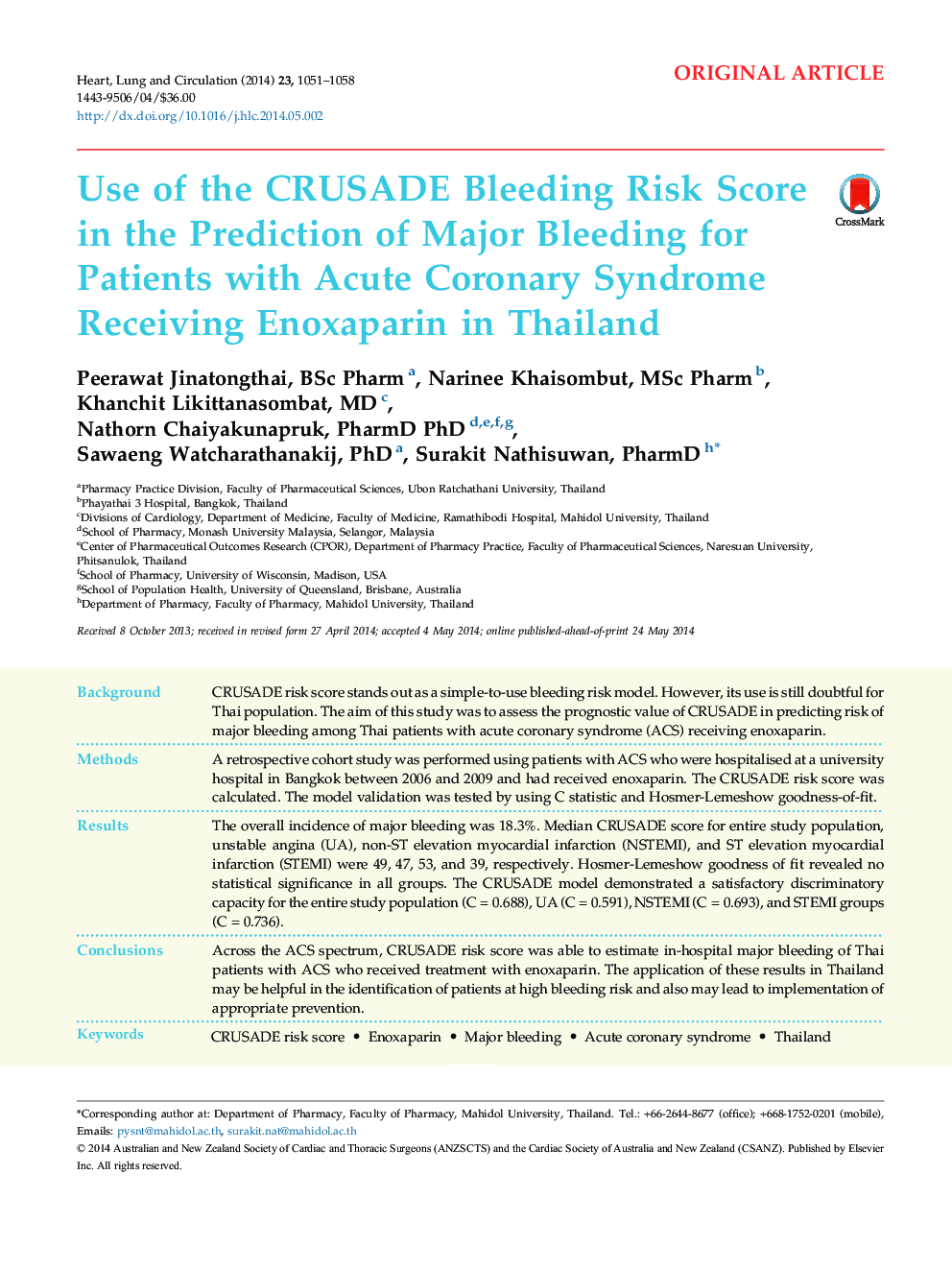| Article ID | Journal | Published Year | Pages | File Type |
|---|---|---|---|---|
| 2917081 | Heart, Lung and Circulation | 2014 | 8 Pages |
BackgroundCRUSADE risk score stands out as a simple-to-use bleeding risk model. However, its use is still doubtful for Thai population. The aim of this study was to assess the prognostic value of CRUSADE in predicting risk of major bleeding among Thai patients with acute coronary syndrome (ACS) receiving enoxaparin.MethodsA retrospective cohort study was performed using patients with ACS who were hospitalised at a university hospital in Bangkok between 2006 and 2009 and had received enoxaparin. The CRUSADE risk score was calculated. The model validation was tested by using C statistic and Hosmer-Lemeshow goodness-of-fit.ResultsThe overall incidence of major bleeding was 18.3%. Median CRUSADE score for entire study population, unstable angina (UA), non-ST elevation myocardial infarction (NSTEMI), and ST elevation myocardial infarction (STEMI) were 49, 47, 53, and 39, respectively. Hosmer-Lemeshow goodness of fit revealed no statistical significance in all groups. The CRUSADE model demonstrated a satisfactory discriminatory capacity for the entire study population (C = 0.688), UA (C = 0.591), NSTEMI (C = 0.693), and STEMI groups (C = 0.736).ConclusionsAcross the ACS spectrum, CRUSADE risk score was able to estimate in-hospital major bleeding of Thai patients with ACS who received treatment with enoxaparin. The application of these results in Thailand may be helpful in the identification of patients at high bleeding risk and also may lead to implementation of appropriate prevention.
